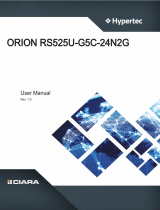
- 4 -
2-3-1 CPU Common Options ...........................................................................................63
2-3-2 DF Common Options ..............................................................................................68
2-3-3 UMC Common Options ..........................................................................................73
2-3-4 NBIO Common Options ..........................................................................................86
2-3-5 FCH Common Options ...........................................................................................92
2-3-6 NTB Common Options ...........................................................................................95
2-3-7 SOC Miscellaneous Control ...................................................................................96
2-4 AMD PBS Menu ............................................................................................. 97
2-4-1 RAS ........................................................................................................................98
2-5 Chipset Setup Menu ..................................................................................... 100
2-5-1 North Bridge .........................................................................................................101
2-6 Server Management Menu ........................................................................... 102
2-6-1 System Event Log ................................................................................................104
2-6-2 View FRU Information ..........................................................................................105
2-6-3 BMCNetworkConguration .................................................................................106
2-6-4 IPv6BMCNetworkConguration .........................................................................107
2-7 Security Menu .............................................................................................. 108
2-7-1 Secure Boot .........................................................................................................109
2-8 Boot Menu ..................................................................................................... 111
2-8-1 UEFI NETWORK Drive BBS Priorities ................................................................113
2-8-2 UEFI Application Boot Priorities ................................................................. 114
2-9 Save & Exit Menu ......................................................................................... 115
2-10 ABL POST Codes ........................................................................................ 116
2-10-1 StartProcessorTestPoints .....................................................................................116
2-10-2 Memory test points ...............................................................................................116
2-10-3 PMU Test Points ...................................................................................................116
2-10-4 Original Post Code ...............................................................................................117
2-10-5 CPU test points .....................................................................................................118
2-10-6 Topology test points .............................................................................................. 118
2-10-7 Extended memory test point ................................................................................. 118
2-10-8 Gnb Earlier init ...................................................................................................... 119
2-10-9 PMU test points ....................................................................................................122
2-10-10 ABL0 test points ...................................................................................................122
2-10-11 ABL5 test points ...................................................................................................122
2-11 Agesa POST Codes ..................................................................................... 126
2-11-1 Universal Post Code .............................................................................................126
2-11-2 [0xA1XX] For CZ only memory Postcodes ...........................................................126
2-11-3 S3 Interface Post Code ........................................................................................129
2-11-4 PMU Post Code ....................................................................................................129
2-11-5 [0xA5XX] assigned for AGESA PSP Module ........................................................129
2-11-6 [0xA9XX, 0xAAXX] assigned for AGESA NBIO Module .......................................132






















